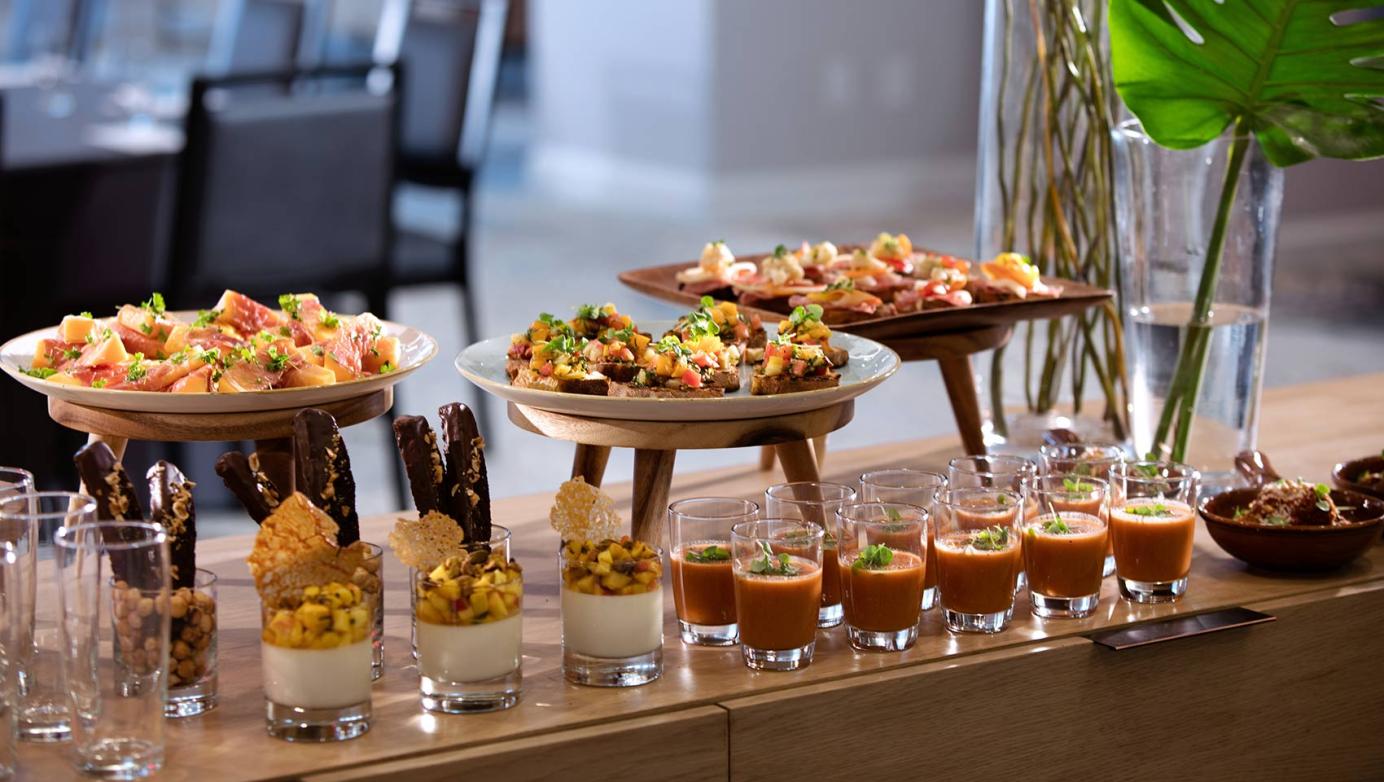Planning a Wedding Menu: A Guide to Creating a Memorable Dining Experience
Your wedding day is one of the most important days of your life, and the food you serve your guests plays a significant role in creating a memorable and enjoyable experience. With so many factors to consider, from dietary preferences to catering styles, planning a wedding menu can be a daunting task. This comprehensive guide will provide you with all the tips and insights you need to create a wedding menu that impresses your guests and reflects your unique style.

I. Understanding Dietary Preferences And Restrictions
Accommodating your guests' dietary preferences and restrictions is essential for ensuring a positive dining experience for everyone.
- Vegetarian and Vegan Options:
- Allergies and Intolerances:
- Religious and Cultural Dietary Restrictions:
If you have vegetarian or vegan guests, ensure you offer a variety of dishes that cater to their dietary needs. This could include vegetable-based entrees, salads, appetizers, and desserts.

Be mindful of guests with food allergies or intolerances. Clearly label dishes containing common allergens, such as nuts, gluten, and dairy, and provide alternative options for those with specific dietary restrictions.
Consider any religious or cultural dietary restrictions your guests may have. For example, if you have Jewish guests, ensure you offer kosher options, or if you have Hindu guests, avoid serving beef or pork.
Tips For Gathering Information About Guests' Dietary Needs:
- Include a dietary preference section in the RSVP card, allowing guests to indicate their preferences and restrictions.
- Create a dedicated online form for guests to provide their dietary information. This allows for more detailed responses and can be easily accessed by your caterer.
- Reach out to guests individually if necessary, especially if they have complex dietary restrictions or allergies. This shows that you genuinely care about their needs and are willing to accommodate them.
II. Selecting A Catering Style

The catering style you choose will significantly impact the overall dining experience at your wedding. Consider the following options:
- Buffet-Style:
- Plated Meals:
- Food Stations:
- Cocktail Reception:
Buffet-style catering offers a wide variety of dishes, allowing guests to choose what they like. This style is often preferred for large weddings and provides a more casual and interactive dining experience.
Plated meals are served individually to each guest. This style is often preferred for more formal weddings and provides a more elegant and refined dining experience.
Food stations offer a variety of dishes, but guests can choose what they want to eat from each station. This style is a great way to provide a variety of options and cater to different dietary preferences.
A cocktail reception is a great option for smaller weddings or couples who want a more relaxed and informal dining experience. This style typically includes passed hors d'oeuvres and drinks.
Factors To Consider When Choosing A Catering Style:
- Venue Size and Layout: Consider the size and layout of your wedding venue when choosing a catering style. Some styles, such as buffets, require more space than others.
- Number of Guests: The number of guests you have will also influence your choice of catering style. Some styles, such as plated meals, are more suitable for smaller weddings, while others, such as buffets, can accommodate larger groups.
- Budget: Catering costs can vary depending on the style you choose. Buffets are often more affordable than plated meals, while food stations can be more expensive.
- Level of Formality: Consider the level of formality you want for your wedding when choosing a catering style. Plated meals are often preferred for more formal weddings, while buffets and food stations are more suitable for casual weddings.
III. Choosing The Right Menu
The menu you choose should reflect your taste and preferences as a couple. Consider the following tips for creating a balanced and appealing menu:
- Include a Variety of Flavors and Textures: Offer a variety of dishes with different flavors and textures to cater to different tastes. Include a mix of sweet, savory, sour, and bitter dishes, as well as a variety of textures, such as crispy, soft, and chewy.
- Consider Seasonal and Locally Sourced Ingredients: Using seasonal and locally sourced ingredients can add freshness and flavor to your dishes. This can also support local farmers and businesses.
- Incorporate Signature Dishes or Family Recipes: If you have any signature dishes or family recipes that hold special meaning for you, consider incorporating them into your wedding menu. This can add a personal touch and make the meal even more memorable.
- Offer a Mix of Hot and Cold Dishes: Provide a mix of hot and cold dishes to cater to different preferences and dietary needs. This can also help balance the menu and ensure there is something for everyone to enjoy.
- Provide Options for Both Meat-Eaters and Vegetarians/Vegans: Ensure you offer a variety of dishes that cater to both meat-eaters and vegetarians/vegans. This will ensure that everyone has something delicious to eat, regardless of their dietary preferences.
IV. Presentation And Ambiance
The presentation of your food and the overall ambiance of your wedding reception play a significant role in creating a memorable dining experience.
- Choose Elegant Servingware and Table Linens: Use elegant servingware and table linens to create a visually appealing dining experience. This can include charger plates, crystal glassware, and high-quality cutlery.
- Incorporate Centerpieces and Decorations That Match the Wedding Theme: Choose centerpieces and decorations that match the theme and style of your wedding. This can help create a cohesive and inviting ambiance.
- Consider Hiring a Professional Stylist or Decorator: If you want to create a truly stunning dining experience, consider hiring a professional stylist or decorator. They can help you choose the right servingware, table linens, and decorations to create a cohesive and visually appealing look.
V. Finalizing The Menu
Once you have selected your catering style, chosen your menu, and considered the presentation and ambiance, it's time to finalize the menu.
- Conduct a Menu Tasting: Schedule a menu tasting well in advance of the wedding. This allows you to sample the dishes and make any necessary adjustments.
- Invite the Couple, Their Families, and Key Wedding Vendors: Invite the couple, their families, and key wedding vendors, such as the wedding planner and caterer, to the menu tasting. This ensures that everyone is on the same page and satisfied with the menu.
- Provide Feedback to the Caterer and Make Necessary Adjustments: Provide feedback to the caterer based on the menu tasting. This could include requests for changes to the dishes, adjustments to the presentation, or additional dietary options.
VI. Conclusion
Planning a wedding menu requires careful planning and attention to detail. By considering your guests' dietary preferences and restrictions, selecting the right catering style, choosing the perfect menu, and paying attention to presentation and ambiance, you can create a dining experience that impresses your guests and reflects your unique style. With the right approach, your wedding menu will be a highlight of your special day and leave a lasting impression on your guests.
YesNo

Leave a Reply